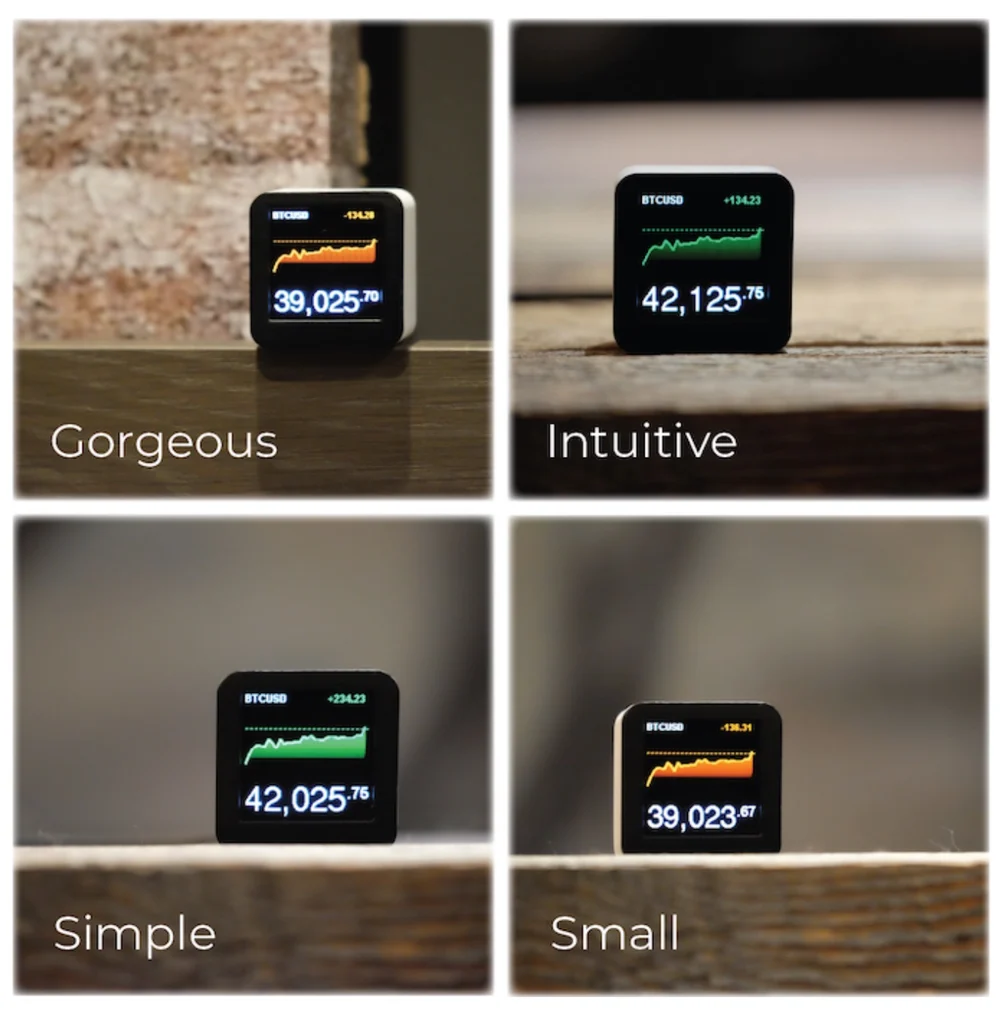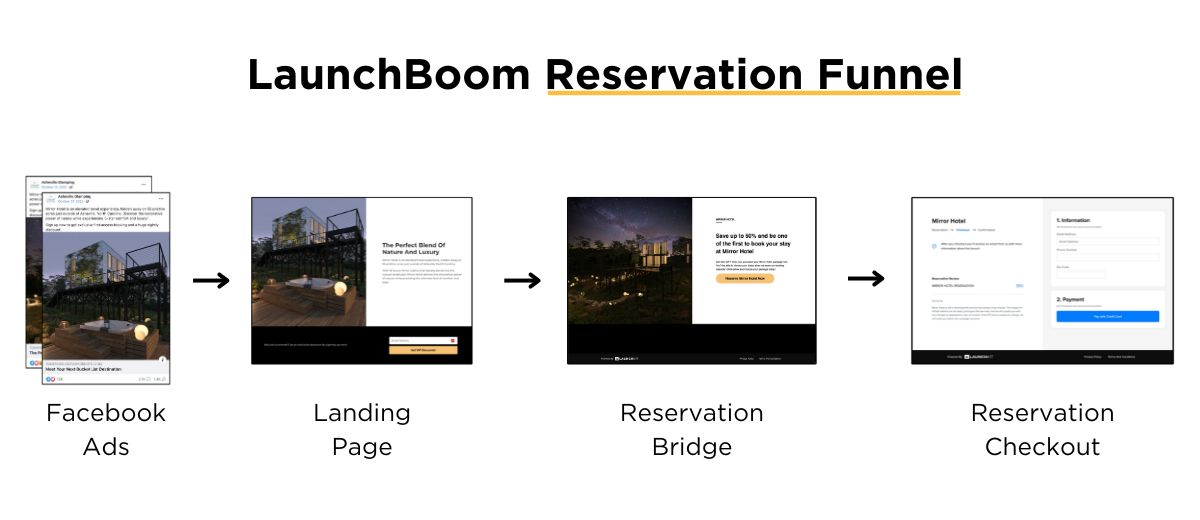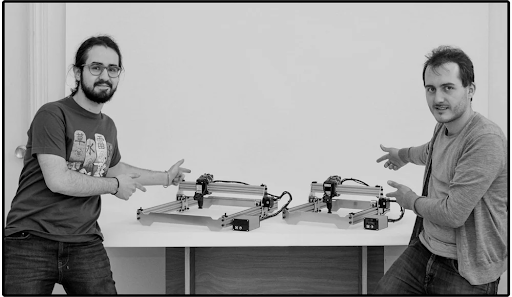
On December 16, 2017, Igor Koshutin clicked the “cancel” button on his Kickstarter campaign. Thirty-eight grueling days, and he’d only raised $10,800 of his $50,000 goal.
Igor definitely isn’t alone when it comes to failed crowdfunding campaigns. 59% of Kickstarter campaigns fail. Millions of entrepreneurs watch their dreams shatter after pouring heart and soul into a product.
So what happens if crowdfunding fails?
For Igor, the dream didn’t end there. He saw the failure as a learning opportunity. And in April 2022, he launched his second campaign. This turnaround was unbelievable. Presales soared. His relaunch campaign raised 8.8x more than his first campaign.
Igor’s dramatic turnaround shows that your moment of failure is often the best opportunity to plan a successful relaunch.
Although it feels like years of hard work down the drain, a failed campaign is an extremely powerful tool. By understanding what went wrong last time, you are in a much better place to recalibrate and come back stronger than before.
When your crowdfunding campaign fails, here’s how to transform past mistakes into a successful relaunch:
- Time your relaunch for maximum impact
- Assess and learn from previous mistakes
- Develop your relaunch strategy
- Market your relaunch effectively
- Sustain relaunch momentum after your campaign ends
Contents
Timing your relaunch for maximum impact
It took Igor 4 years to formulate his relaunch. While there is no definitive perfect time to relaunch, here are a couple things to consider.
First, don’t relaunch immediately. It’s important to take stock of what worked and what didn’t. Relaunching your business takes just as much time, if not more, than the initial attempt.
Second, determine whether your failure was a product issue or a positioning issue.
Igor knew he had a good product. He just needed to get it in front of the right people. If you haven’t tested your product to determine if there is an interest in or need for what you’re selling, then you’re not ready to start your relaunch until you’ve conducted product validation.
Let’s say you’ve tested and validated your product. You know there’s a market. When should you relaunch your crowdfunding campaign?
To be able to answer this question, we analyzed 342,287 Kickstarter projects to determine the best month, day, and time to launch your crowdfunding campaign.
When is the best month to launch?
- December is the worst month to launch
- March has been the most popular month to launch campaigns
- May sees more backers per project than any other month
When is the best day to launch?
- Never launch on a weekend
- More projects launch at the beginning of the week
- Tuesday shows the most projects launched and the most backers / project, versus any other day
Long story short, the best time to launch is at 8AM EST on a Tuesday and the worst month to launch is December.
But while this information is useful to know, I’ve seen many campaigns rush to hit a launch date in a certain month, and end up hurting their success by doing so. It’s more important to take the right amount of time to prepare your launch than it is to hit a specific month.
Learning from the initial campaign
Knowing why crowdfunding fails is critical. Your failed campaign is a goldmine of information. Who engaged with your campaign? How closely did this match your expected audience? Where and when were people losing interest?
By isolating specific points of failure, you set up the groundwork of your relaunch plan. I want to highlight three failed crowdfunding campaigns, and how fixing them led to incredible results.
Mistake #1: Not positioning your product effectively
When Aubrey Lim first launched Kublet on Kickstarter, over half of the days of her campaign yielded $0. Some days even yielded negative revenue as some backers canceled their pledges.
Aubrey knew she needed to make dramatic improvements to her marketing strategy. One subtle but powerful change was overhauling her messaging to highlight the benefits of her product to the customer. Compare her graphics before and after her relaunch.

What benefits are shown in her first campaign? The words gorgeous, intuitive, simple, and small don’t speak to tangible benefits the customer cares about.
Contrast that with the messaging on her second campaign page. The imagery and words link much more clearly to what the customer gets from the product:
This small change in positioning made all the difference. In seven days, her relaunch campaign raised $87,421, which is 3.5x the entire funding of her last campaign.
Mistake #2: Not realizing the game is won in the prelaunch
Alfonso Rodrigo and Samuel Ureta pressed “launch” for their very first Kickstarter campaign for an ambitious new laser cutter, the OKU Desk.
They saw a small burst of pre-orders the first day. But after that, things slowed to a trickle. They clicked the “cancel” button not even a month later.
Alfonso and Samuel’s mistake was they didn’t focus enough on the prelaunch. The goal of a prelaunch email list immediately drives sales to your campaign. This first-day momentum is critical. Without it, their campaign was already dead in the water.
The next time around, Alfonos and Samuel lasered in on the prelaunch. They drove traffic through Meta ads. They built a prelaunch email list of buyers. They used the LaunchBoom Reservation Funnel to not only increase the quantity but also the quality of leads.
Here’s how the funnel works:
- Drive traffic: use Facebook ads to drive traffic to a landing page.
- Collect leads: have an opt-in on a landing page to collect leads.
- Collect reservations: offer leads the opportunity to “reserve” the best discount by putting down a $1 deposit. This was a game changer — People who put down a $1 deposit are on average 30x more likely to buy!
Their efforts paid off. The next time they clicked “launch”, they saw an immediate change. On their first day, they raised 10 times more than what they’d raised on their entire previous campaign.
Not only did they reach their funding goal, Alfonso and Samuel carried these lessons onward to their next product.
Two years later, they launched an even more ambitious product, an all-in-one CNC router called the Red Fox 2.
They raised €20K in 1 minute…
€100K in 4 hours…
And nearly €200K in 24 hours.
The results are clear. Alfonso and Samuel had transformed a brutal failure into a powerful marketing formula and back-to-back crowdfunding success.
Mistake #3: Not building a VIP community
![[picture of Simon]](https://www.launchboom.com/wp-content/uploads/2022/10/34.1-Simon-Lasnier-Midronome-300x300-1.png)
In April 2022, Simon Lasnier clicked the “cancel” button after years of hard work developing Midronome, a synchronization device for electronic musicians.
In his failed campaign, Simon had built an email list of about 400 people. Every person on this list got the same treatment, even though some were much more qualified than others.
For his relaunch, he first multiplied his list by ten, growing his prelaunch list to over 4,000 people. And then he built a VIP community.
When someone put down a $1 reservation, Simon invited them to sign up for his private VIP community on Facebook. This select group got quicker updates, more announcements, and opportunities to share feedback.
![[picture of community group]](https://www.launchboom.com/wp-content/uploads/2022/11/simon-facebook-group.jpeg)
Not only did this open another channel between Simon and his most high-quality leads, but it gave his community a greater sense of ownership over his launch. This is the IKEA Effect in motion. When people got more involved in the process, they felt more emotionally connected to his brand. This loyalty made them much more likely to buy Simon’s product on launch day.
These passionate VIPs made a huge splash. On his relaunch campaign, Simon reached his funding goal in just 12 minutes.
Step-by-step guide to preparing for a relaunch
Deciding to relaunch is the first step. You’ve assessed past mistakes and know what you’re going to do differently. Now it’s time to plan your attack.
Step 1: Refine your campaign page
Update your campaign page to highlight any updates or changes since the previous attempt.
Now is also a good opportunity to reevaluate your crowdfunding platform. While there is no definitive best platform, understanding key differences between platforms will inform your decision to either change platforms or re-activate your existing campaign.
Step 2: Re-engage existing backers
Reach out to the backers of your previous campaign. Let them know about your upcoming relaunch. As your earliest early adopters, these are the first people you want in the VIP community of your relaunch. Get them involved and make them feel excited to support your product again.
Step 3: Gain new potential backers with a prelaunch email list
Drive traffic to your landing page with Facebook ads, and invite people to opt into your mailing list. When someone signs up, send them a welcome email (we recommend an email automation tool like Mailchimp).
Your emails should be concise and feel personal. They are the doorway to building one-on-one relationships with your backers.
Step 4: Use a reservation funnel to separate VIPs from non-VIPs

Separate your leads into two segments.
- VIPs – those that reserve by putting down a $1 deposit.
- Non-VIPs – those that give their email, but do not put down a $1 deposit.
Create a community group for your VIPs to interact with your most passionate and engaged potential backers.
Step 5: Offer new perks or incentives to entice both previous backers and potential new backers.
Remember your core audience: People who back crowdfunding projects are people looking to buy innovative products at a discount before anyone else.
We’ve used different reward strategies across our most successful campaigns, but our three best recommendations are discount stacking, the no-brainer deal, and value stacking.
Step 6: Nurture your VIP community
Keep your VIP community in the know. Share product updates. Tease sneak peeks of your new campaign video and campaign page.
Ask for feedback. Not only does it make the relaunch experience more collaborative, feedback from your VIP community is extremely valuable as you test the marketing assets of your relaunch.
Step 7: Have a (Re)LaunchBoom!
When you’ve built up the excitement for your product, it’s time to press “launch”.
This time, you’ve laid all the groundwork. You’ve made the mistakes and overcome them. Now watch the years and hours of hard work jump back to life.
Marketing your relaunch effectively

When it comes to marketing your relaunch, understanding the primary sources of traffic will help you maximize your backers on relaunch day. We call these the four horsemen of traffic.
Your prelaunch email list
Your email list is the primary driver of revenue for the first twenty-four hours of your campaign, so make sure you’re building up the hype.
Seven days before you launch, send your email list a launch announcing the exact date and time of your launch.
Online advertising
Online advertising is a must for any crowdfunding campaign. Use Meta advertising to target both existing and new audiences.
Remarketing to previous backers or previous leads is great for creating a “surround-sound effect.” From their email to their social media feed, people should see your product everywhere they go. These audiences are more qualified and much more likely to yield high return on ad spend. You want them to be clued in about your relaunch.
PR and influencer marketing
Landing solid PR provides your campaign with two important things:
First, PR creates credibility. Everyone loves to see the “logo clouds” and comments from top media outlets.
Second, PR generates sales. Top-tier media placement can put millions of eyeballs on your product, which can drive tons of revenue.
When executing a PR strategy yourself, we recommend getting your project on Kickbooster. You get a high degree of visibility, since Kickbooster has a massive community of affiliates, which they call “boosters.” And Kickbooster does a great job of incentivizing publishers to write about their projects, getting you more media attention and more media logos to stick on your campaign page.
Your crowdfunding platform
The more successful you are at driving engagement with your prelaunch email list, online advertising, and PR, the more you’ll get sales from Kickstarter or Indiegogo’s communities.
Both platforms have a ranking system. Generally, the more popular your campaign is, the higher you climb in the rankings.
Don’t be afraid to reach out to friends and family and personally ask them to commit to backing your project on day one. Even if they back the campaign at just one dollar, their support will get you that much higher in the rankings and maximize your chances of success.
Sustaining momentum after a relaunch
After relaunch day, the work is far from over. Keep up the momentum with qualified traffic from ads, email lists, and PR. Once the campaign is over, continue to pre-sell and upsell products to your backers.
When done right, your VIP group won’t fade away after the relaunch. Continue to engage and build the group. As we’ve seen with Alfonso and Samuel’s back-to-back Kickstarter success, a loyal and engaged VIP community will stay with your brand for projects to come.
Final thoughts
It’s a harsh reality that 59% of Kickstarter campaigns fail. But by learning from past mistakes, you can initiate a successful relaunch and revive your project.
Here’s a recap of how to relaunch your crowdfunding campaign:
- Determine the right time to relaunch
- Learn from the mistakes of failed crowdfunding projects
- Develop your relaunch plan based on our proven Reservation Funnel and prelaunch strategies
- Market your relaunch through the four horsemen of traffic
- Sustain momentum after your relaunch
And our last tip: don’t go at it alone! If you’re considering a relaunch, our team is here to help. Ready to relaunch? Let’s talk.






